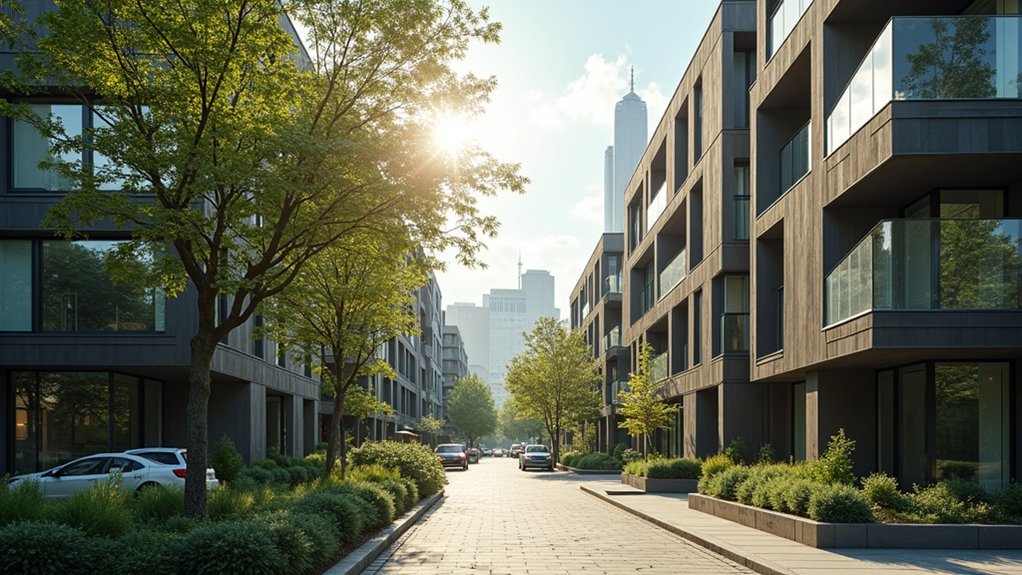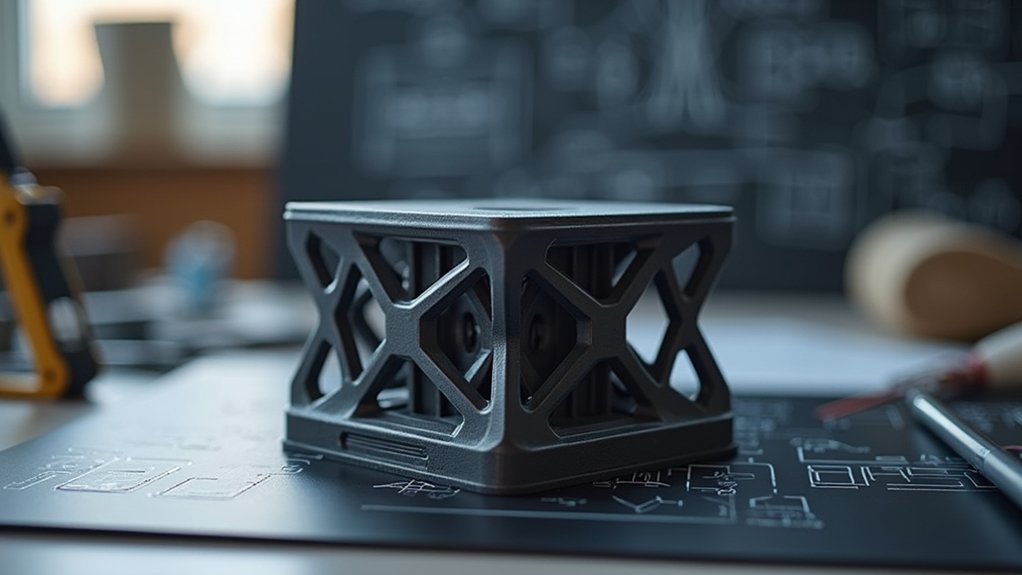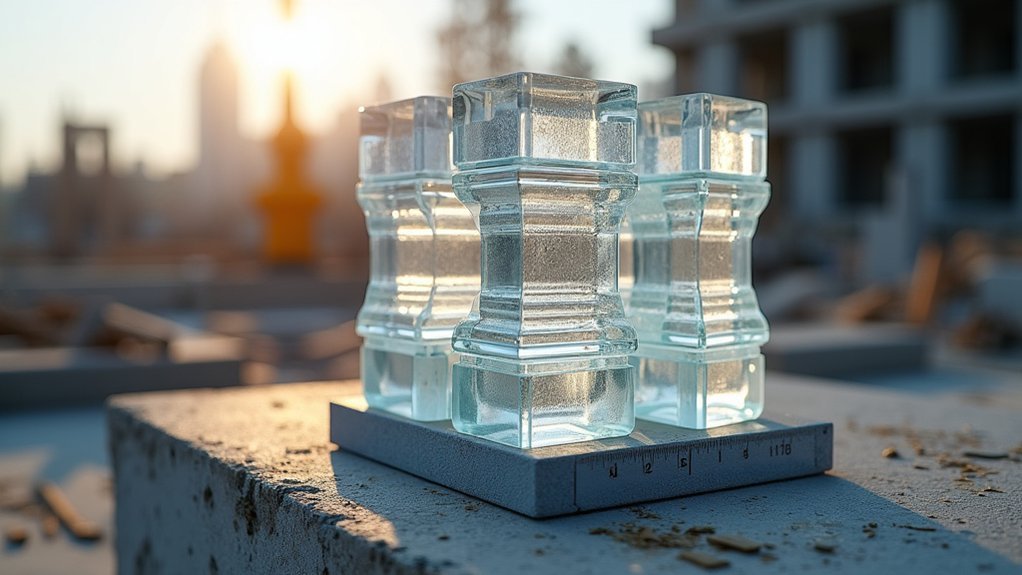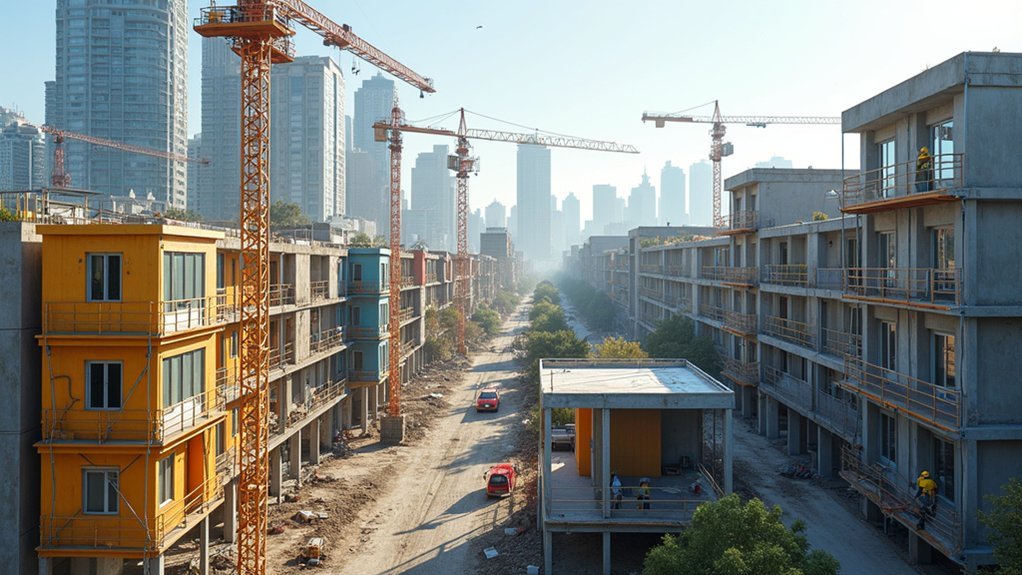You’ll need cubic subdivision infill when your 3D printed parts must handle complex loads from multiple directions while keeping material costs and print times to a minimum. It’s ideal for mechanical components like brackets, gears, and housings that face real-world stresses, as well as large format prints where material efficiency matters. This pattern excels in automotive, aerospace, and medical applications requiring strength-to-weight optimization at 20-30% density. Understanding specific implementation strategies can maximize your printing success.
Understanding Cubic Subdivision Infill Structure and Properties

When you’re looking for an infill pattern that maximizes strength while minimizing material usage, cubic subdivision infill stands out as an algorithmically sophisticated solution that transforms traditional solid filling approaches.
This pattern creates smaller cubic units strategically positioned throughout your print’s interior, delivering enhanced rigidity and part strength in all directions. You’ll find that cubic subdivision’s complex 3D structure provides superior support compared to simpler infill types while using considerably less material.
The pattern’s intelligent design prevents overhangs during printing by naturally supporting upper layers without additional scaffolding. You can adjust infill density between 10% and 50%, allowing you to balance material conservation with the structural requirements of your specific application.
This versatility makes cubic subdivision particularly valuable for functional parts requiring ideal strength-to-weight ratios.
Mechanical Components Requiring Multidirectional Strength
When you’re designing mechanical components that’ll face forces from multiple directions, cubic subdivision infill becomes your go-to solution for distributing loads evenly throughout the part.
You’ll find this infill pattern excels at absorbing impacts and resisting deformation, making it perfect for brackets, gears, and housings that must withstand real-world stresses.
Whether you’re creating complex geometries with intricate internal features or straightforward functional parts, cubic subdivision’s multidirectional strength guarantees your components won’t fail under pressure.
Load Distribution Properties
Three critical advantages make cubic subdivision infill the preferred choice for mechanical components requiring multidirectional strength. You’ll experience superior load distribution properties that effectively spread forces across multiple axes, preventing stress concentration points that could lead to failure. The algorithmically complex structure provides strength in all directions while minimizing material consumption.
| Load Direction | Stress Distribution | Performance Rating |
|---|---|---|
| X-Axis | Even dispersion | Excellent |
| Y-Axis | Balanced loading | Excellent |
| Z-Axis | Uniform support | High |
| Multi-axial | ideal resistance | Superior |
| Torsional | Enhanced stability | High |
You’ll find this infill pattern particularly effective for brackets, supports, and frames experiencing varying stress orientations. The structure’s resistance to deformation and bending guarantees your components maintain integrity under dynamic loads.
Impact Resistance Benefits
Since cubic subdivision infill excels at absorbing sudden impacts, you’ll benefit from enhanced component durability when designing parts that face unexpected shock loads or impact forces.
This infill pattern’s 3D grid structure distributes stress evenly across all directions, providing the required strength for mechanical components experiencing multidirectional forces.
You’ll find cubic subdivision particularly valuable for:
- Automotive brackets and mounting hardware subjected to vibrations and road impacts
- Aerospace components requiring lightweight construction with superior impact resistance
- Robotic arms and joints handling dynamic loads during operation
- Tool handles and housings experiencing repeated shock forces
- Industrial equipment parts facing bending and twisting stresses
At 20-30% infill density, you’ll achieve ideal strength-to-weight ratios while maintaining excellent impact resistance for demanding applications.
Complex Geometry Applications
Complex mechanical components with intricate geometries demand infill patterns that can handle stress from multiple angles, and cubic subdivision delivers exactly what these challenging designs require.
When you’re printing parts with overhangs, internal channels, or angular features, this infill’s algorithmically complex structure provides superior support throughout the build process. You’ll find cubic subdivision particularly valuable for complex geometry applications where traditional patterns fail to maintain structural integrity.
The pattern’s ability to distribute stress evenly makes it perfect for components like brackets, housings, and mechanical assemblies with varying wall thicknesses.
You can achieve reliable strength at lower densities, reducing material usage while ensuring your intricate designs won’t fail under mechanical loads. This efficiency becomes essential when balancing performance requirements with weight constraints in engineering applications.
Large Format Prints With Material Efficiency Constraints
When you’re tackling large format prints, you’ll find that cubic subdivision infill excels at reducing filament waste while maintaining the structural integrity your project demands.
This pattern’s algorithmic approach creates a 3D grid that minimizes material consumption without sacrificing strength, making it ideal for extensive builds where cost efficiency matters.
You’ll achieve lighter final prints with adequate support across stress points, ensuring your large components remain durable despite using less filament.
Reducing Filament Waste
As large format prints demand substantial filament quantities, cubic subdivision infill emerges as a game-changing solution for material efficiency.
You’ll find this pattern dramatically reduces your material usage while maintaining structural integrity.
When you’re focused on reducing filament waste, cubic subdivision delivers exceptional value:
- Optimize density settings – You can reduce infill to 10-20% without compromising strength
- Minimize operational costs – Less filament consumption translates to significant budget savings
- Achieve faster print times – Reduced material requirements speed up your printing process
- Maintain structural performance – The algorithmically complex design guarantees strength in all directions
- Scale efficiently – Large prints benefit most from this pattern’s material-saving properties
You’ll discover that cubic subdivision’s intelligent lattice structure provides comparable strength to traditional patterns while consuming substantially less filament.
Maintaining Structural Integrity
While material efficiency drives your choice of cubic subdivision infill, you can’t afford to sacrifice the structural performance that large format prints demand.
Cubic subdivision delivers exceptional load dissipation throughout your model, preventing stress concentrations that could lead to failure. This algorithmic pattern’s 3D structure enhances your part’s strength while maintaining the lightweight construction essential for large builds.
When your prints face bending or flexing forces, cubic subdivision’s resistance to deformation becomes vital. The pattern’s strategic density distribution at 20-30% guarantees you’re getting maximum structural integrity per gram of filament used.
You’ll find this infill particularly valuable for functional applications where your large format prints must withstand external forces during actual use while keeping material costs reasonable.
Functional Prototypes Balancing Durability and Cost

Because functional prototypes must endure real-world testing while keeping costs manageable, cubic subdivision infill offers a superior solution that bridges this challenging gap.
Cubic subdivision infill delivers the perfect balance of structural integrity and cost efficiency for demanding prototype applications.
When you’re developing functional prototypes, cubic subdivision infill delivers exceptional value through its optimized design:
- Material efficiency – Uses considerably less filament than traditional cubic patterns while maintaining structural strength
- Enhanced load distribution – Algorithmically designed structure effectively handles stress and strain during testing phases
- Reduced print time – Faster production compared to solid infill patterns, accelerating your prototyping cycles
- Optimal strength-to-weight ratio – Provides necessary durability without adding excessive mass to your prototypes
- Cost-effective density – Around 20% infill density achieves sufficient stiffness for most applications
This infill pattern guarantees you won’t compromise on prototype performance while controlling manufacturing expenses and timeline constraints.
Complex Geometries Needing Uniform Internal Support
When your designs feature intricate internal cavities, overhangs, or irregular geometries, cubic subdivision infill provides the uniform internal scaffolding that traditional patterns can’t match.
This algorithmic approach creates consistent support throughout your part, regardless of shape complexity. Unlike linear or grid patterns that may leave weak spots in complex geometries, cubic subdivision adapts to your design’s unique requirements.
You’ll find this infill particularly valuable when printing organic shapes, architectural models, or mechanical parts with varying wall thicknesses.
The pattern’s ability to distribute loads effectively means your complex geometries maintain structural integrity even under stress. At 20-30% density, you’re getting ideal strength-to-weight ratios while minimizing material waste—perfect for those challenging prints where uniform support throughout the entire internal structure is absolutely critical.
Load-Bearing Applications With Weight Restrictions

As your project demands both structural integrity and strict weight limits, cubic subdivision infill becomes the ideal choice for load-bearing components. This algorithmically optimized pattern delivers high strength while maintaining exceptional weight efficiency, typically requiring only 20-30% infill density.
Your components benefit from cubic subdivision’s unique advantages:
- Multi-directional force resistance – maintains integrity regardless of load orientation
- Optimized material distribution – strategic placement maximizes strength-to-weight ratio
- Reduced print weight – efficient space utilization without compromising mechanical properties
- Engineering-grade performance – ideal for brackets, frames, and structural prototypes
- Critical weight compliance – meets strict aerospace and automotive weight restrictions
You’ll find this infill pattern excels when designing components where every gram matters, yet structural failure isn’t an option.
Automotive and Aerospace Parts Manufacturing
The automotive and aerospace industries have embraced cubic subdivision infill as their go-to solution for manufacturing lightweight yet durable components.
You’ll find this infill pattern particularly beneficial when creating thin-walled aerospace designs that require efficient load distribution and stress resistance. The cubic subdivision structure delivers exceptional strength-to-weight ratios, making your parts lighter without sacrificing structural integrity.
You’ll appreciate how this pattern reduces material consumption, which directly impacts cost-efficiency in automotive manufacturing.
When you’re working with components subjected to dynamic loads, the algorithmic complexity enables faster print times while maintaining necessary strength levels.
Aerospace engineers especially favor cubic subdivision for prototype development, as it perfectly balances durability requirements with the lightweight characteristics essential for maximum flight efficiency and high-performance applications.
Architectural Models Requiring Structural Integrity
Because architectural models demand precise representation of complex structural elements, cubic subdivision infill becomes your most reliable choice for achieving both accuracy and durability.
Cubic subdivision infill delivers unmatched precision and durability for complex architectural models requiring accurate structural representation.
When you’re creating architectural models that need to withstand handling and display, cubic subdivision delivers exceptional performance through its sophisticated internal structure.
You’ll benefit from:
- Cost-effective material usage – Minimizes filament consumption while maintaining structural robustness for large-scale prints
- Superior load distribution – Algorithmic complexity ensures intricate architectural features remain intact under stress
- Optimal strength-to-weight ratio – 20% density setting creates lightweight yet durable models for easy handling
- Overhang prevention – 3D cube orientation eliminates excessive support structures, preserving architectural details
- Enhanced dimensional stability – Prevents warping to guarantee your final print matches design specifications perfectly
This infill pattern assures your architectural models maintain their intended precision and structural integrity.
Industrial Tooling and Jigs Production
Moving beyond architectural displays, industrial tooling and jigs demand even greater performance standards that cubic subdivision infill readily meets. You’ll find this pattern essential when manufacturing precision tools that require both strength and cost-effectiveness. The algorithmic complexity creates lightweight yet robust internal structures that distribute loads evenly, preventing deformation during repeated use.
| Benefit | Impact |
|---|---|
| Material Reduction | Lower production costs |
| Even Load Distribution | Enhanced durability |
| Faster Print Times | Increased workflow efficiency |
| Minimal Waste | Environmental sustainability |
When you’re producing high-volume manufacturing tools, cubic subdivision infill delivers the structural integrity needed for precise jigs and fixtures. You’ll achieve faster production times compared to solid infill options while maintaining the stability required for industrial applications that demand repeated, reliable performance.
Medical Device Prototyping and Testing
When you’re prototyping medical devices, you’ll need to take into account that cubic subdivision infill works exceptionally well with biocompatible materials like medical-grade PLA and PETG while maintaining structural integrity.
You must guarantee your prototypes meet stringent regulatory testing standards, where the uniform internal structure of this infill pattern provides consistent mechanical properties across multiple test samples.
You’ll find that the predictable stress distribution characteristics of cubic subdivision infill help accelerate the validation process required for medical device approval pathways.
Biocompatible Material Requirements
As you develop medical device prototypes using cubic subdivision infill, you’ll need to guarantee your chosen materials meet strict biocompatibility standards that govern human contact and implantation.
This infill pattern’s material efficiency becomes particularly valuable when working with expensive biocompatible materials, as it maintains structural integrity while reducing waste and costs.
The cubic subdivision approach supports various biocompatible material requirements:
- Reduced material volume minimizes exposure to potentially harmful substances
- Enhanced stress distribution prevents material fatigue in critical applications
- Improved porosity control for applications requiring specific fluid dynamics
- Faster iteration cycles with expensive biocompatible filaments
- Compliance alignment with regulatory standards emphasizing material minimization
You’ll find this infill especially beneficial for biocompatible devices requiring both strength and lightweight characteristics, particularly in orthopedic applications.
Regulatory Testing Standards
Beyond material selection, your cubic subdivision infill prototypes must pass rigorous regulatory testing standards that evaluate mechanical performance, dimensional accuracy, and structural reliability.
When you’re developing medical devices, organizations like the FDA require prototypes to demonstrate mechanical integrity under various stress conditions. Cubic Subdivision infill’s algorithmically optimized structure provides uniform load distribution, helping your prototypes meet these stringent performance criteria.
The strength-to-weight ratio offered by this infill pattern proves particularly valuable during regulatory testing standards compliance.
You’ll find that its consistent performance characteristics support ISO 13485 requirements for reliable manufacturing methods. Additionally, the rapid prototyping capabilities enable faster design iterations, allowing you to meet regulatory deadlines while maintaining the structural integrity necessary for successful testing and approval processes.
Comparing Cubic Subdivision to Alternative Infill Patterns
While traditional infill patterns like Grid and Triangular designs have served 3D printing well, Cubic Subdivision stands out by offering superior material efficiency without compromising structural integrity.
When you’re choosing between infill options, consider these key advantages of Cubic Subdivision:
- Material savings: Uses considerably less filament than traditional Cubic infill while maintaining comparable strength.
- Reduced print time: Complex internal structure prints faster, especially at lower densities.
- Multi-directional strength: Provides better load resistance than Grid infill patterns in various orientations.
- Deformation resistance: Outperforms Triangular patterns under stress applications.
- Functional focus: Prioritizes engineering performance over aesthetic appeal unlike Honeycomb patterns.
You’ll find Cubic Subdivision particularly valuable when weight reduction and material efficiency matter most for your functional parts.
Frequently Asked Questions
When to Use Cubic Infill?
You’ll choose cubic infill when you need basic structural strength with moderate material usage. It’s perfect for prototypes, decorative items, and parts where you don’t require maximum strength but want reliable support.
When to Use Concentric Infill?
You should use concentric infill when printing cylindrical or rounded objects where you need enhanced strength along curved surfaces, reduced warping risk, improved aesthetics, or maximum load-bearing capability under compressive forces.
When Might You Use Low Infill?
You’ll use low infill when printing prototypes, decorative items, or large objects where strength isn’t critical. It saves material, reduces print time, and works well for testing designs before final versions.
Is Cubic Infill Better Than Grid?
You’ll find cubic infill generally outperforms grid infill because it’s more material-efficient while providing superior strength in all directions, especially for functional parts requiring durability and ideal weight distribution.





Leave a Reply